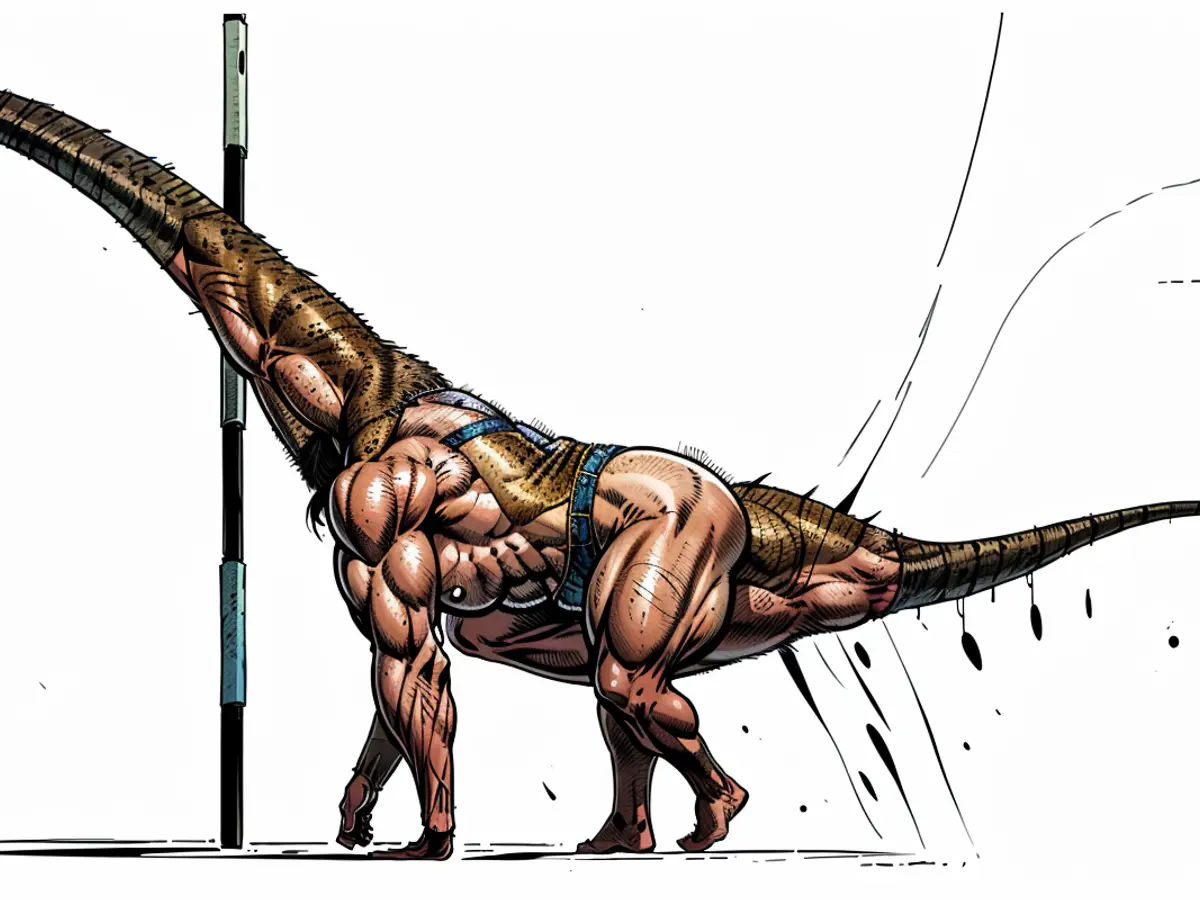Uncovered in Spain: colossal long-necked dinosaur boasting an impressive length
At the Spanish dig site of Lo Hueco, scientists unearth fossils. The bone find unveils a never-before-seen dinosaur species, offering fresh perspectives on the giants' demise.
An enormous dinosaur measuring approximately 20 meters long and weighing an impressive 15 tons has surfaced in Spain. This colossal herbivore resided around 75 million years ago, as reported by Spanish and Portuguese researchers. The titanosaur's arrival in the journal "Nature Communications Biology" was announced.
This newly emerging species holds potential vital insights into dinosaurs on the brink of extinction around 66 million years ago, as scientists explain. The discovery of this species in Spain indicates that Europe, contrary to previous beliefs, served as a hub for both indigenous and foreign sauropods during the late Cretaceous period.
Co-author Francisco Ortega clarified that formerly, it was thought that nearly all European titanosaurs belonged to the native Lirainosaurus genus, which developed in isolation in Europe from the end of the Cretaceous until their extinction. However, the new discovery suggests that titanosaurs migrated to Europe at the end of the Cretaceous, which shares close family ties with Asian and North American dinosaurs.
Moniker inspired by "Don Quixote"
The fossils were unearthed at the Lo Hueco excavation site, situated approximately 200 kilometers south of Madrid. According to Ortega, it boasts one of Europe's most complete sauropod skeletons ever found.
The newly-dubbed dinosaur has been christened "Qunkasaura pintiquiniestra." The first part of its name draws inspiration from the Cuenca province where the fossils were found and "Saura," which connects to both the Latin term for "lizard" and influential Spanish painter Antonio Saura. The name "pintiquiniestra" retains a reference to a formidable giant queen figure from Miguel de Cervantes' "Don Quixote."
Lo Hueco site brimming with secrets
Lo Hueco, unveiled during excavations for Spain's high-speed train line in 2007, is now regarded as one of Europe's most essential paleontological sites from the Upper Cretaceous era. Over 12,000 fossils have been excavated from the site, including sauropods, turtles, and crocodiles.
Ortega likens Lo Hueco to a textbook on Europe's sauropods from the Upper Cretaceous period. By studying the remains, paleontologists aspire to gain additional knowledge about life conditions at the time. The site presents a veritable treasure trove of undiscovered secrets, according to Ortega. "We are aware of the existence of at least one more specimen in Cuenca."
This newly discovered dinosaur, named "Qunkasaura pintiquiniestra," shares close family ties with dinosaurs from Asia and North America, challenging the previous belief that European titanosaurs belonged solely to the Lirainosaurus genus. The gigantic herbivore, which resided around 75 million years ago, provides valuable insights into dinosaurs on the brink of extinction around 66 million years ago.








